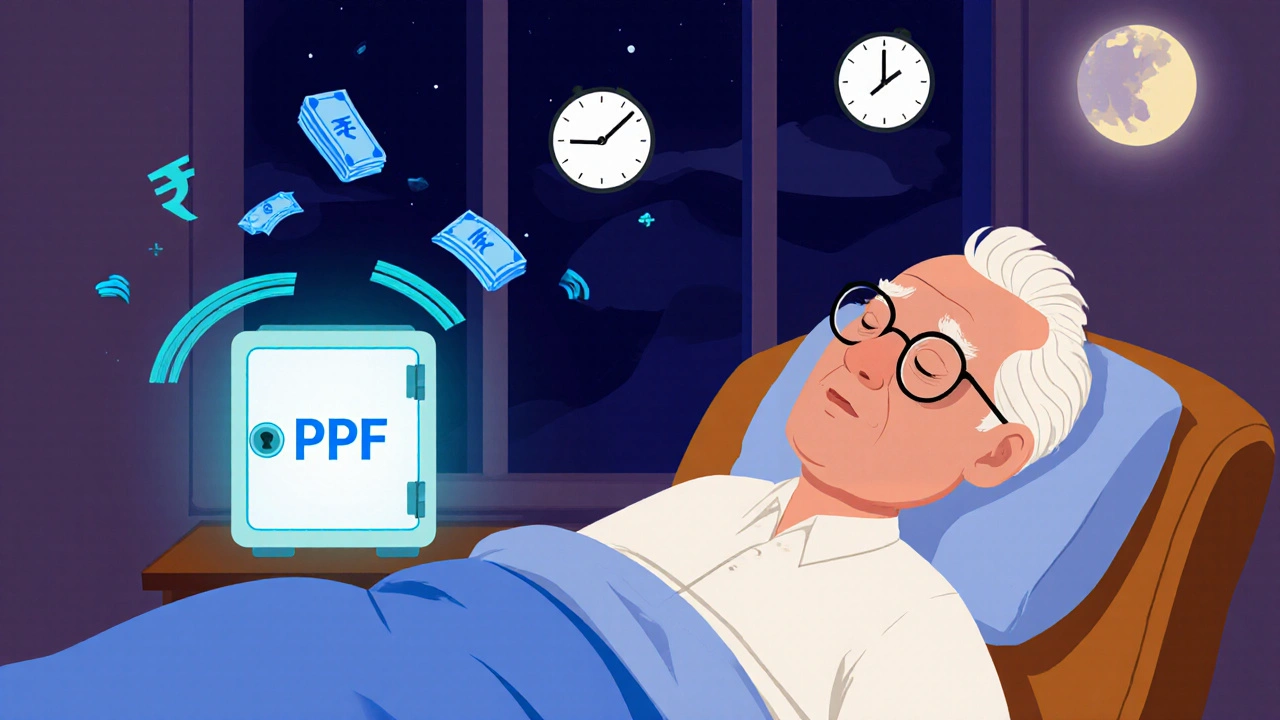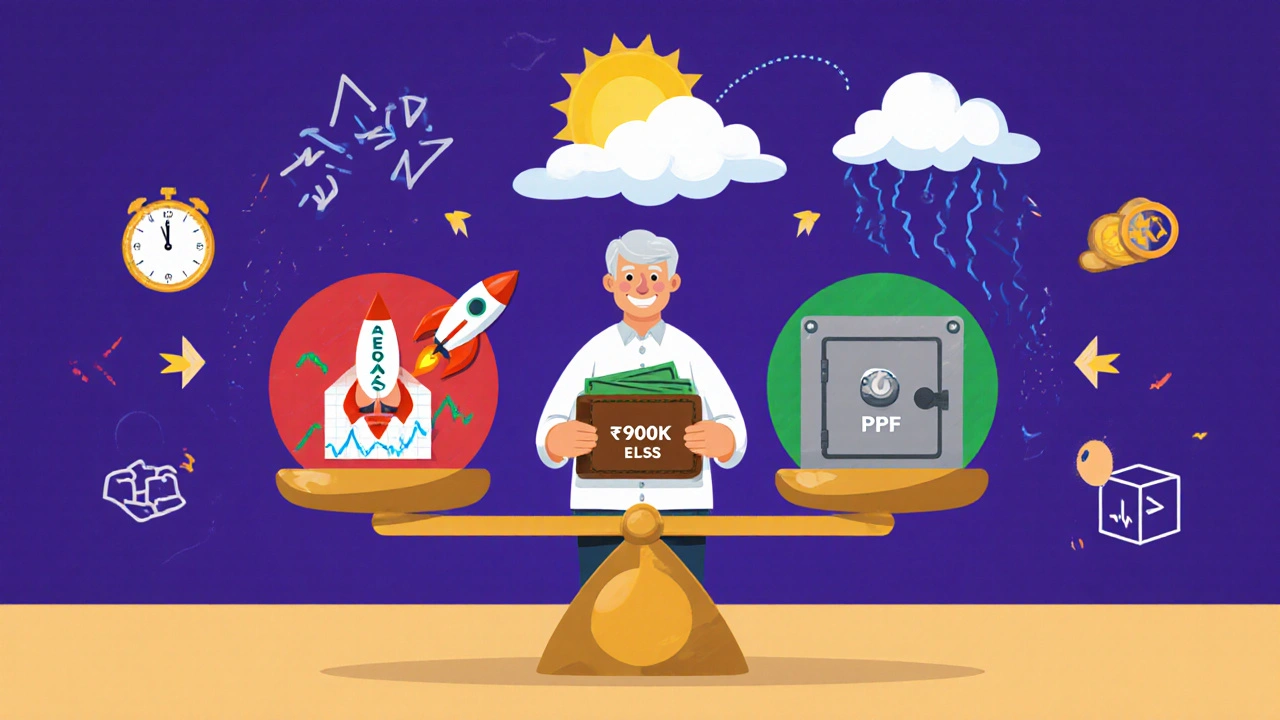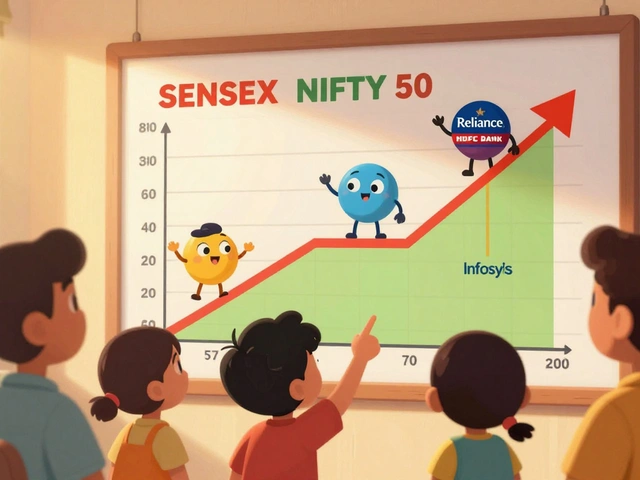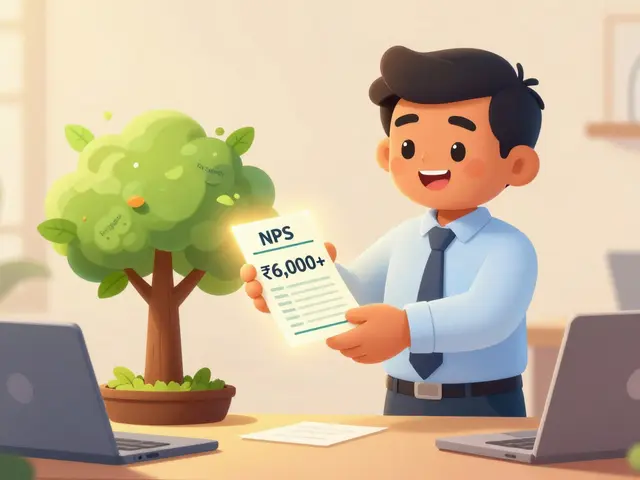Risk and Return in 80C Instruments in India: Conservative vs Market-Linked Options
When you hear Section 80C, you probably think of tax savings. But here’s the thing most people miss: not all 80C options are created equal. Some lock your money away safely with almost no risk. Others throw you into the stock market with no seatbelt. Choosing the wrong one doesn’t just cost you returns-it can cost you peace of mind.
What Section 80C Actually Lets You Claim
Section 80C of the Income Tax Act lets you reduce your taxable income by up to ₹1.5 lakh per year. That’s not a deduction on your tax bill-it’s a reduction in the income that gets taxed. If you’re in the 30% tax bracket, that’s ₹46,800 back in your pocket. But the real question isn’t how much you save in taxes. It’s how your money grows after you invest it.
The government lists 15 eligible instruments under 80C. But only five make up 95% of all investments: Public Provident Fund (PPF), Employee Provident Fund (EPF), National Savings Certificate (NSC), Tax-Saving Fixed Deposits (FDs), and Equity-Linked Savings Schemes (ELSS). The rest-like tuition fees or home loan principal-are situational. If you’re investing for tax savings, you’re likely choosing between PPF, FDs, and ELSS.
Conservative Options: PPF, FDs, NSC
These are the go-to choices for people who hate volatility. You want safety. You want predictability. You don’t want to check your portfolio every day.
PPF is the gold standard. It’s backed by the Indian government, offers a fixed interest rate (currently 7.1% as of April 2025), and has a 15-year lock-in. But here’s the twist: you can withdraw partial amounts after 7 years, and the entire corpus is tax-free at maturity. That’s rare. Most tax-saving tools tax your gains. PPF doesn’t. It’s a triple tax advantage: invest tax-free, grow tax-free, withdraw tax-free.
Tax-saving FDs have a 5-year lock-in and pay between 6.5% and 7.5%. They’re safe, but the returns are barely above inflation. If inflation hits 5%, you’re earning a real return of just 1.5% to 2.5%. That’s not growth-it’s preservation.
NSC is similar to FDs but with a 5-year term and interest compounded annually. The catch? The interest is taxable each year, even though you don’t get it until maturity. That eats into your effective return. Most people forget this and end up with a surprise tax bill.
These three are low-risk. But low risk doesn’t mean high reward. Over 15 years, a ₹1.5 lakh annual investment in PPF at 7.1% grows to about ₹41 lakh. Sounds good? Maybe. But if you’d invested that same amount in ELSS, you’d have closer to ₹75 lakh.
Market-Linked Options: ELSS Funds
ELSS-Equity-Linked Savings Scheme-is the only 80C instrument that invests directly in the stock market. It’s a mutual fund with a 3-year lock-in. That’s the shortest lock-in of any 80C option. And it’s the only one with real growth potential.
Historical data shows that top-performing ELSS funds delivered 12% to 15% annual returns over the last 15 years. Even the average ones beat PPF by 3-5 percentage points. The key? Time. The longer you stay invested, the more market volatility smooths out.
Take someone who invested ₹1.5 lakh every year in an ELSS fund averaging 13% return. After 15 years, they’d have ₹75.8 lakh. Compare that to PPF’s ₹41 lakh. That’s ₹34.8 lakh more. And it’s all tax-free.
But here’s the trade-off: ELSS can drop 20-30% in a bad year. In 2022, when markets crashed, many ELSS funds lost over 25%. If you panicked and pulled out after the 3-year lock-in, you’d have lost money. But if you held through 2023 and 2024, you’d have recovered and then some.
Real People, Real Choices
Meet Priya, 32, a software engineer in Bengaluru. She invests ₹1.5 lakh annually in ELSS. She knows the market will swing. She doesn’t check her portfolio monthly. She adds to it every year, rain or shine. In 2024, her ELSS corpus hit ₹62 lakh. She’s on track for ₹80 lakh by 45.
Now meet Raj, 48, a government clerk. He puts ₹1.5 lakh into PPF every year. He doesn’t know what the Nifty is. He just knows his money is safe. His PPF corpus is ₹40 lakh. He sleeps well. He doesn’t want to worry.
Neither is wrong. But their outcomes are worlds apart. Priya’s money works harder. Raj’s money works safer.

When to Pick Conservative Over Market-Linked
You should lean conservative if:
- You’re within 5 years of retirement
- You can’t handle seeing your balance drop 20%
- Your income is fixed and you need guaranteed cash flow
- You’ve already built a solid emergency fund and don’t need growth
PPF and tax-saving FDs make sense here. They’re predictable. You know what you’ll get. No surprises.
When Market-Linked Makes Sense
ELSS is the right move if:
- You’re under 40 and have 15+ years until retirement
- You can invest regularly, even when markets are down
- You understand that short-term loss is part of long-term gain
- You’re okay with not touching the money for at least 5-7 years
ELSS isn’t gambling. It’s compounding. The earlier you start, the more the market does the heavy lifting. A 25-year-old investing ₹1.5 lakh/year in ELSS could have over ₹1.2 crore by 60. That’s not fantasy. That’s math.
What No One Tells You About Lock-Ins
Lock-in periods aren’t just rules-they’re psychological tools. PPF’s 15-year lock-in stops you from spending your tax savings. ELSS’s 3-year lock-in stops you from reacting to market panic. Most people lose money not because the market crashes. They lose it because they sell when it does.
That’s why lock-ins work. They force discipline. Even if you don’t like the market, you can’t touch the money. And that’s often the difference between success and failure.

Hybrid Approach: Split Your 80C Limit
You don’t have to pick one. You can split your ₹1.5 lakh. For example:
- ₹90,000 in ELSS (60%)
- ₹60,000 in PPF (40%)
This gives you growth potential with a safety net. If the market tanks, your PPF keeps growing steadily. If the market surges, your ELSS carries the gains.
Many financial advisors in India now recommend this 60/40 split for people aged 30-50. It balances risk without sacrificing growth.
Don’t Forget the Hidden Costs
ELSS funds charge an expense ratio-usually 1.5% to 2.5%. That’s higher than PPF or FDs, which have zero fees. But over 15 years, even a 2% fee on a 13% return still leaves you with 11% net. That’s still better than PPF’s 7.1%.
Always check the fund’s historical returns, not just the fund house’s name. A new fund with flashy ads might have a 10% return. An older fund with steady 14% returns? That’s the one.
Final Rule: Match Your Risk to Your Time
There’s no perfect 80C instrument. Only the right one for your situation.
If you’re young and have time, go heavy on ELSS. Let compounding work. If you’re close to retirement, stick with PPF. Keep it safe. If you’re in between? Split the difference.
Don’t chase the highest return. Chase the option that lets you sleep at night-and still grows your wealth.
Is ELSS riskier than PPF?
Yes, ELSS is riskier because it invests in stocks, so its value can drop in the short term. PPF is government-backed and offers fixed returns with no risk of loss. But over 10+ years, ELSS has historically delivered much higher returns.
Can I lose money in ELSS under Section 80C?
Yes, you can lose money if you withdraw during a market downturn, especially within the first 3 years. But if you stay invested for 7-10 years, historical data shows you’re very likely to make a profit. Timing matters more than the instrument.
Which 80C option gives the highest tax savings?
All 80C options give the same tax savings-up to ₹1.5 lakh deduction. The difference isn’t in tax saved, but in how much your money grows after you invest. ELSS grows the fastest, PPF grows the slowest but safest.
Is PPF better than FD for tax saving?
PPF is better than tax-saving FDs for most people. It offers higher interest (7.1% vs 6.5-7.5%), tax-free maturity, and longer-term growth. Tax-saving FDs are taxable on interest each year, which reduces your effective return.
Can I invest more than ₹1.5 lakh in 80C instruments?
Yes, you can invest more than ₹1.5 lakh, but you won’t get any additional tax benefit under Section 80C. Any amount above ₹1.5 lakh doesn’t reduce your taxable income. Still, investing more in ELSS or PPF can make sense for long-term wealth building.
If you’re unsure where to start, begin with PPF. It’s simple, safe, and gives you breathing room to learn. Once you’re comfortable, add ELSS. Don’t wait for the perfect moment. Start now. Even ₹5,000 a month in ELSS can turn into a life-changing sum in 20 years.




